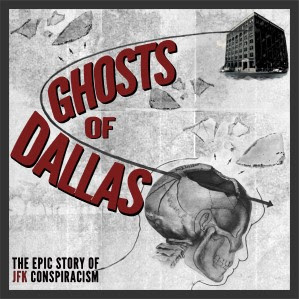My main source for day-to-day info about the Shaw trial has once again been Patricia Lambert’s excellent False Witness. Also highly useful were Fred Litwin’s On the Trail of Delusion, Vincent Bugliosi’s Reclaiming History, and Edward Epstein’s Counterplot (as reprinted in his larger book The Assassination Chronicles).
My account of the defence’s motion for a directed verdict draws on this contemporary newspaper report and this one. My quotations of Irvin Dymond and Perry Russo come from these sources.
Quotations from Dean Andrews’s testimony come from False Witness, p. 148.
For the sidebar in Judge Haggerty’s office see False Witness, p. 149.
Garrison didn’t even bother to turn up in court to listen to Shaw’s testimony … Epstein, p. 290.
For Bugliosi’s remarks on Shaw’s cross-examination see Reclaiming History, p. 1379.
CIA mentioned only once during the trial … See Bugliosi, 1379n.
Bugliosi on the “unpardonable sin” … Reclaiming History, p. 1380.
Quotes from Dymond’s closing statement come from False Witness.
Quotes from Garrison’s closing argument come from Bugliosi, p. 1380.
A full transcript of Garrison’s closing statement can be read here.
Dymond, “What the motive of the Clinton Witnesses is I do not know …” quoted by Gerald Posner in Case Closed, p. 147.
Anthony Summers’s discussion of the Clinton evidence in Conspiracy (1991) comes on pp. 305-306 and in the unpaginated “Update” at the front of the book.
Two of the Clinton witnesses were explicitly asked if they saw Banister … see this article by Dave Reitzes.
For Summers’s 2013 rethink of the Clinton evidence, see Not in Your Lifetime, Endnotes, p. 528.
All the material about Anne Dischler and Patricia Lambert’s unraveling of the Clinton mystery comes from Lambert’s False Witness.
For Gordon Novel and the forged documents, see Posner’s Case Closed, p. 433.
Corrie Collins was the only Clinton witness who identified all three of Garrison’s chief conspirators … Again see this article by Dave Reitzes.
The quotes from the Shaw jurors come from Fred Litwin’s On the Trail of Delusion.
The NYT “disgraceful chapter …” editorial is quoted by Bugliosi, p. 1376.
The “Garrison should resign” editorial is quoted by Epstein, p. 291.
Bugliosi, “It is extremely rare, almost unheard-of …" Reclaiming History, p. 1376.
Garrison privately explained that convicting Shaw of perjury would have the same “effect” as a conspiracy conviction … see Lambert, False Witness.
Shaw wrote in his diary that the situation had become Kafkaesque … see Bugliosi, p. 1377.
As Shaw’s lawyer put it, “They couldn’t find anyone who wasn’t afraid to lie …" quoted by Lambert.
Shaw, “Well, it has been a very agonizing three-and-a-half years …” quoted by Litwin.
Quotes from Christenberry’s ruling come from Bugliosi, p. 1377.
Harry Connick Sr’s quotes come from Bugliosi, p. 1377.
Quotes from the Army’s psychiatric report about Garrison come from Lambert.
The Milton Brener quote comes from his book The Garrison Case: A Study in the Abuse of Power.
Clay Shaw had his own theory about Garrison’s persecution of him … see Lambert.
Clay Shaw debriefed by the CIA’s Domestic Contact Service … see Epstein, p, 291.
Dymond, “What he did to Clay Shaw is a travesty of justice …” quoted by Posner, pp. 449-450.
Quotes from Clay Shaw’s journal come from Lambert.
Quotes from the text of Shaw’s lawsuit come from Litwin.
The NYT report on the demise of Shaw’s lawsuit is here.
Weisberg, “Somewhere down the road he lost contact with reality …” quoted by Bugliosi, p. 1378.
Weisberg’s remarks about the Warren Report (“a monstrous evasion” etc.) come from The Scavengers and Critics of the Warren Report by R. W. Lewis and Lawrence Schiller, p. 124.
